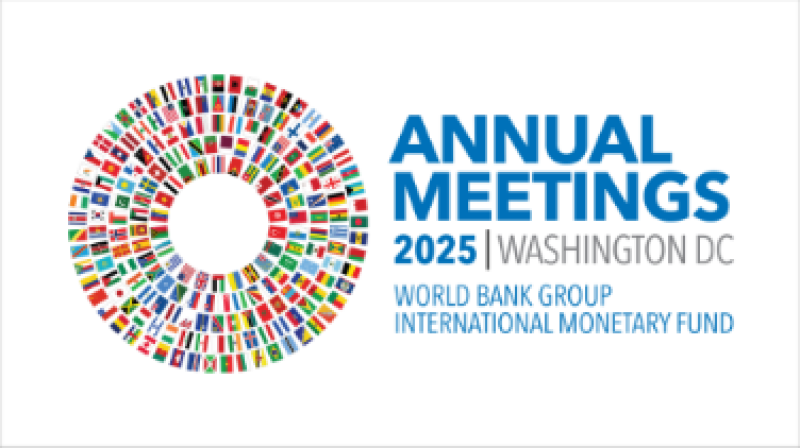- Khaleda now not fit for travelling: Medical Board |
- Panchagarh records lowest temperature 10.5°C so far this year |
- Christmas returns to Bethlehem after two years of Gaza war |
- কলাপাড়া মুক্ত দিবসে এবার সাড়া নেই কার |
- One killed, two injured in attack at Ctg meeting over marriage |
Unlocking IMF Gold Could Stabilize the Global South Economy

Countries across the Global South face an accelerating climate crisis, sluggish growth, and unsustainable debt levels. Yet hopes of finding support at the International Monetary Fund’s (IMF) Annual Meetings in Washington are dim. The IMF is tightening its purse strings — even as it sits on more than 3,000 tons of gold, a prime opportunity to stabilize the global economy.
While IMF lending generated record income in FY2024, fears that Trump could cut off funding—combined with the organization’s exposure on an ill-advised, US-directed mega-loan to Argentina—have prompted the Fund to reassess its assistance to those most in need.
At last year’s meetings, the IMF implemented tiered interest rates on loans made through the Poverty Reduction and Growth Trust (PRGT), a formerly interest-free lending facility for low-income countries.
The Fund also maintained (with slight modifications) its controversial “surcharge” policy, which generates revenue by charging fees to highly indebted middle-income countries. Income from surcharges is effectively used to fund the PRGT, forcing these distressed countries to subsidize the Fund’s concessional lending.
Yet while the IMF squeezes financing from the very countries it is meant to support, it is sitting on hundreds of billions of dollars worth of idle resources.
When the Fund was founded in 1944, members were required to pay at least a quarter of their initial contribution in gold, then the foundation of the global monetary order. The gold standard is long gone, but the IMF still holds 90.5 million ounces—or over 3,000 tons—historically held at the central banks of major shareholders.
Critically, this gold is still on the IMF’s books at a 1944 price of roughly $48 per ounce. Today, amid geopolitical uncertainty and increased central bank demand, prices have soared above $4,000 per ounce. In other words, the IMF’s gold reserves are worth more than 85 times their accounting value.
Selling just 1.5 percent of these holdings would cover all surcharge income through 2030. Selling 10 percent would fund the PRGT’s entire current lending for a decade.
There is precedent. In 1999, when gold was $282 per ounce, the IMF sold 444 tons directly to members, who immediately returned it at the same price to settle debts. The IMF retained the same gold quantity but gained about $3 billion in profit to provide debt relief for low-income countries under the Heavily Indebted Poor Countries Initiative.
In 2009, with gold prices still under a third of today’s, the IMF board sold an eighth of its holdings outright, generating $15 billion, a portion of which was transferred to the PRGT.
So, what’s stopping the IMF from doing the same today?
A sale requires an 85 percent vote of the IMF board. Since proceeds are distributed to members by quotas, a sale to bolster lending would require prior commitments to return their share of the windfall. However, these political hurdles were cleared before, in both 1999 and 2009.
While the US, which effectively holds veto power over major IMF decisions, would need to agree, it is difficult to see a reason for objection. Strengthening global economic stability—and demand for US exports—at no cost to the US aligns with an “America First” agenda.
Concerns about market impacts are minimal. With record-high prices, any IMF sell-off can be phased or off-market, mitigating risks. Even if a sale proves politically difficult, the IMF could revalue its gold holdings to match market prices, increasing its assets without a transaction.
Germany, Italy, and South Africa have revalued national gold holdings, and the US might follow. The IMF’s accounting guidelines even recommend valuing gold at market rates.
Awareness of the need to tap IMF gold is growing. Leading experts, officials from Brazil and South Africa, and the G-24—all representing developing countries—have urged the Fund to consider a sale.
Seeing this through requires political will. But if the alternative is letting developing countries founder—or extracting resources to protect IMF balance sheets—the choice is clear.
Michael Galant is a Senior Research and Outreach Associate, and Ivana Vasic-Lalovic is a Senior Research Associate at the Center for Economic and Policy Research (CEPR), Washington, DC.

